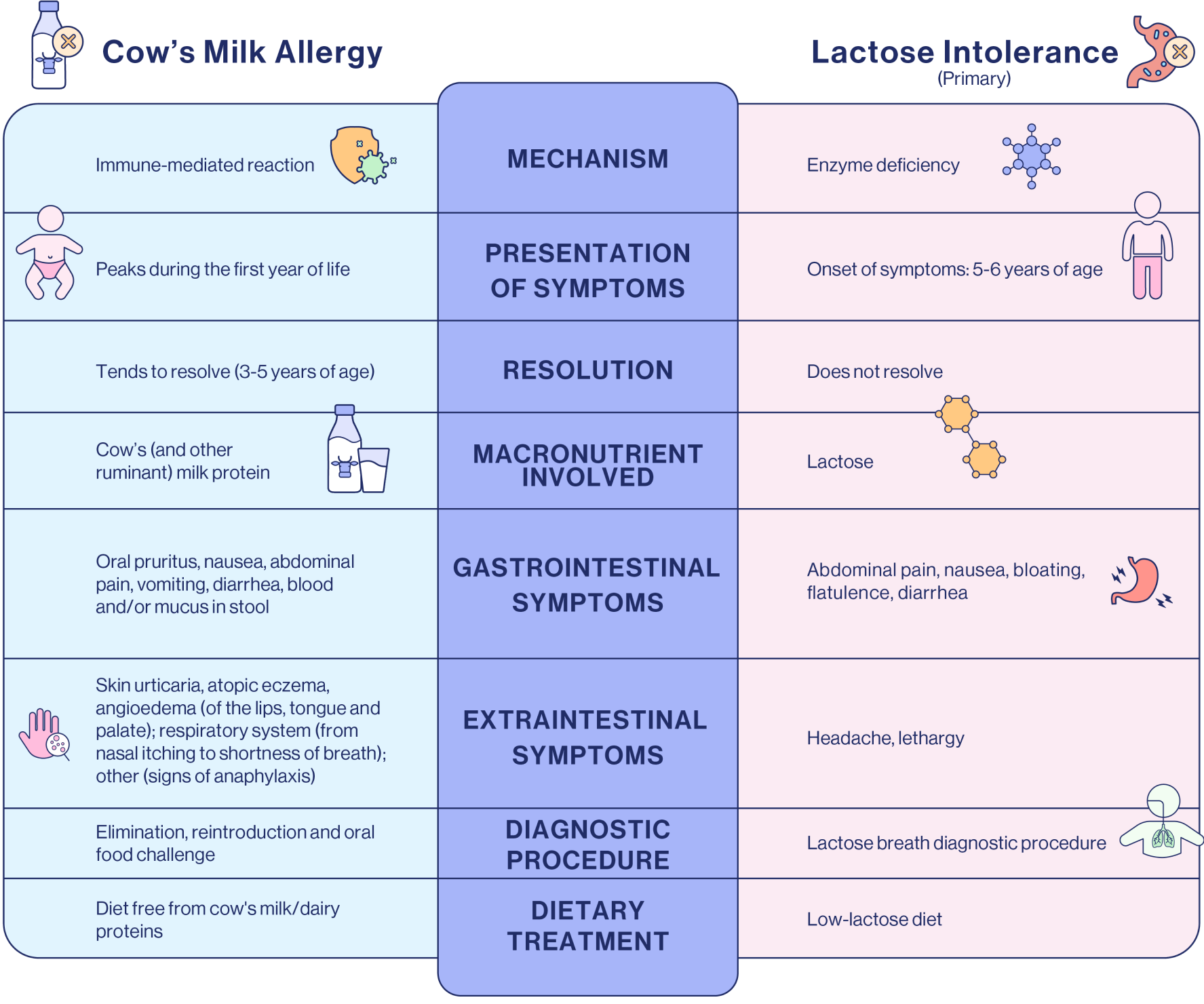NEXT UP
CMPA vs Lactose Intolerance
How to Tell
Them Apart

CMPA is an immune-mediated response to proteins in milk or dairy, mediated through IgE or non-IgE-mechanisms.
Lactose intolerance (LI) is a non-immune mediated condition and is due to the absence (or insufficiency) of the enzyme lactase.
Lactose is the dominant carbohydrate (or sugar) found in human and other mammalian milks and requires enzymatic hydrolysis by the enzyme lactase in the gut in order to be absorbed.1
The symptoms of LI might include bloating, excess wind, abdominal discomfort and diarrhea due to the passage of undigested lactose into the large bowel where it is fermented. Hence the symptoms of lactose intolerance can be confused with CMPA due to similar presentation.
There are 2 types of lactose intolerance (LI), primary and secondary.
Importantly, primary LI does not usually manifest clinically before 5 years of age.1 About 70% of the world’s population, more commonly adults, suffer from primary LI which is genetically predisposed, leading to a gradual decline in lactase expression over time.1,2
Secondary LI can occur at any age, when there is villus damage, for example gut enteropathy, which can occur in some infants with CMPA.1 Secondary LI is transitory and once the cause, commonly viral gastroenteritis (or gut enteropathy in CMPA), has been treated it resolves quickly.3
Lactose is important for the infant with CMPA. It is the dominant carbohydrate in human breastmilk and the largest solid component, representing around 70g/Litre.4 It also forms the backbone to almost all Human Milk Oligosaccharides (HMO), the 3rd largest solid component of human milk.4
Other
Carbohydrates in
Human Milk
HMO are a complex mixture of oligosaccharides designed by the mother for her baby - the ultimate personalised nutrition.
There are around 200 defined HMO in human milk (so far) but the composition varies depending on several factors including genetics, lactation stage, parity, geography and others. HMO are important immunomodulatory components of breastmilk, and more information can be found here.



